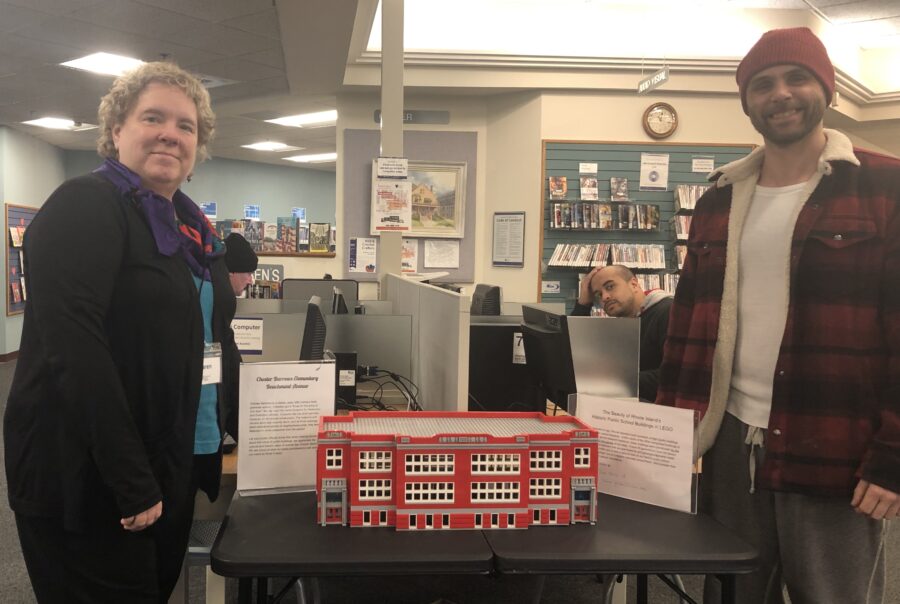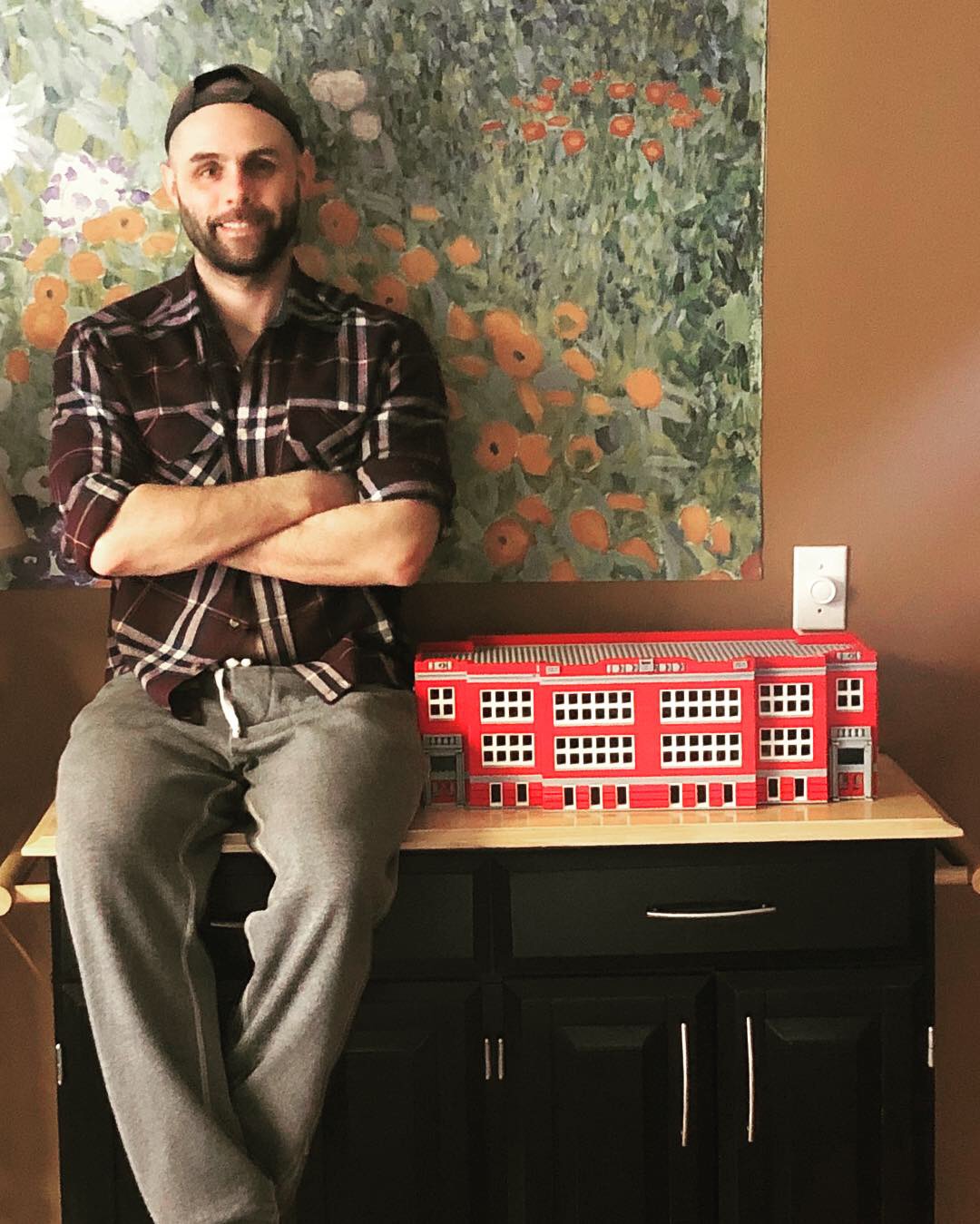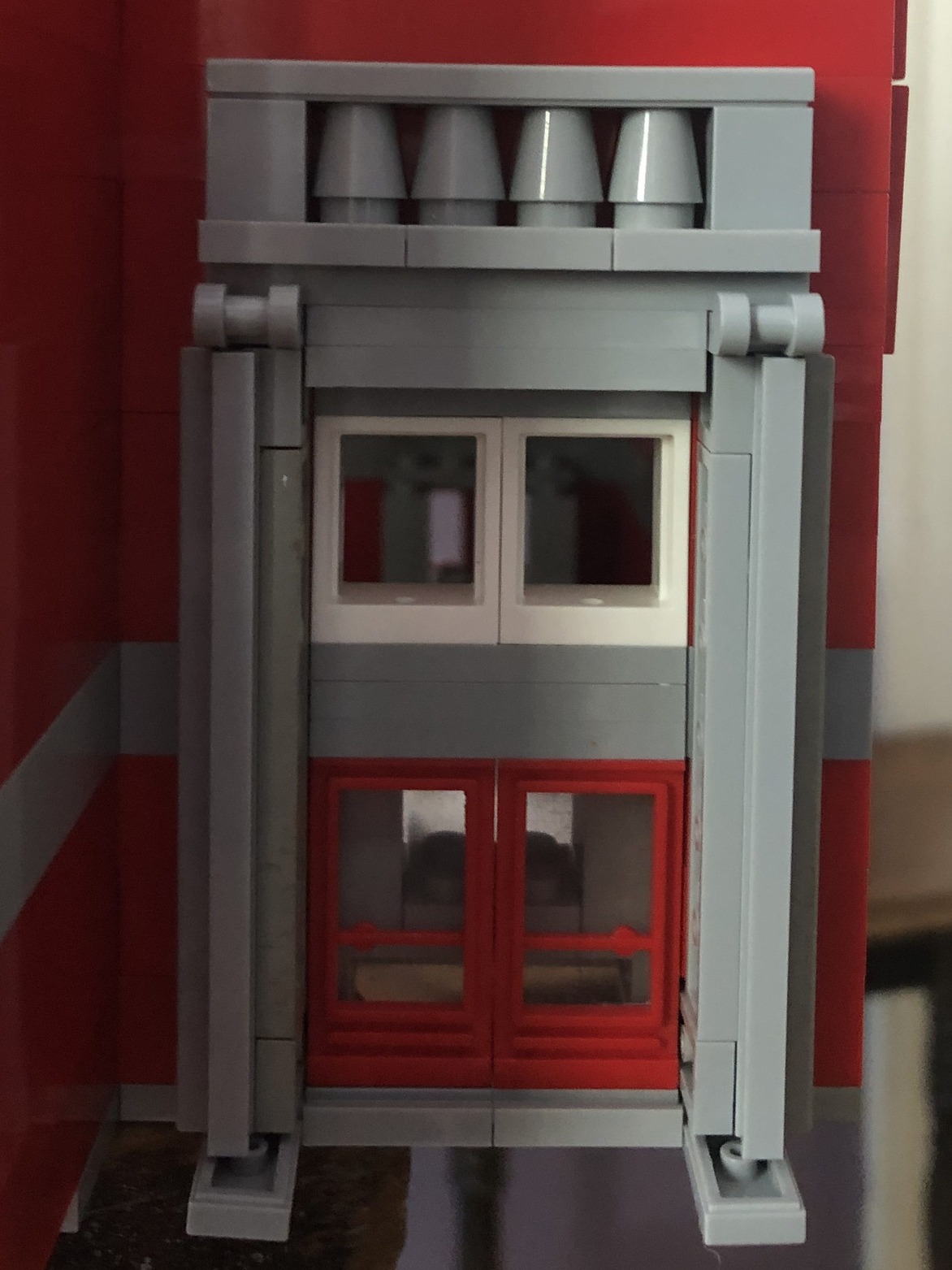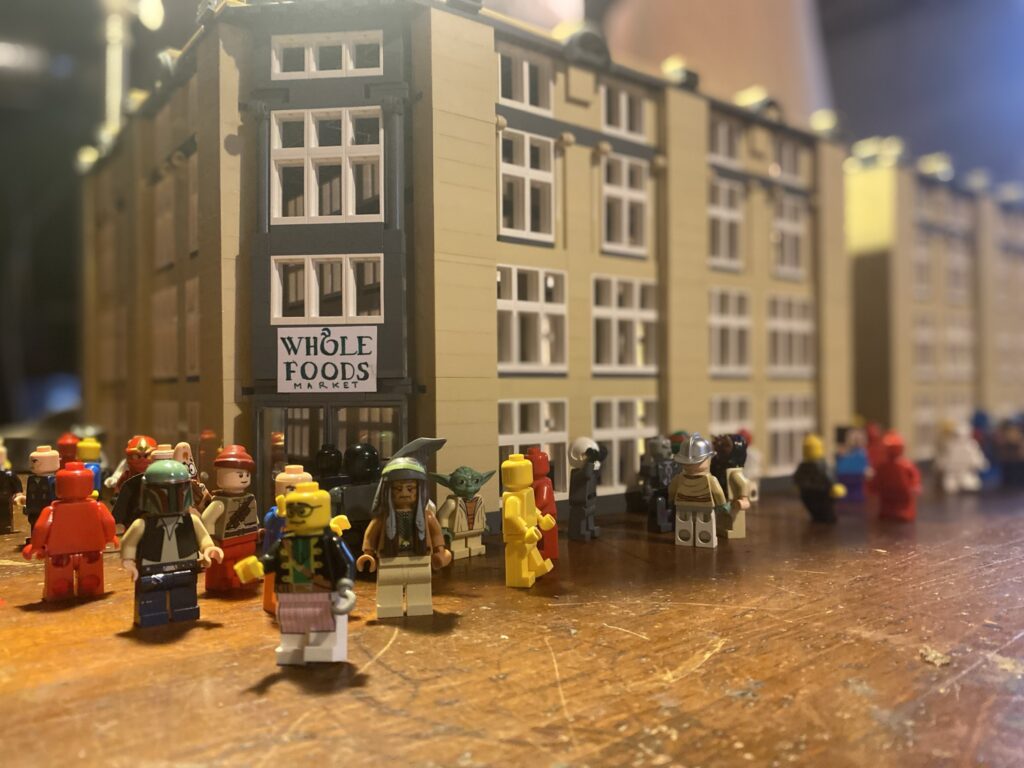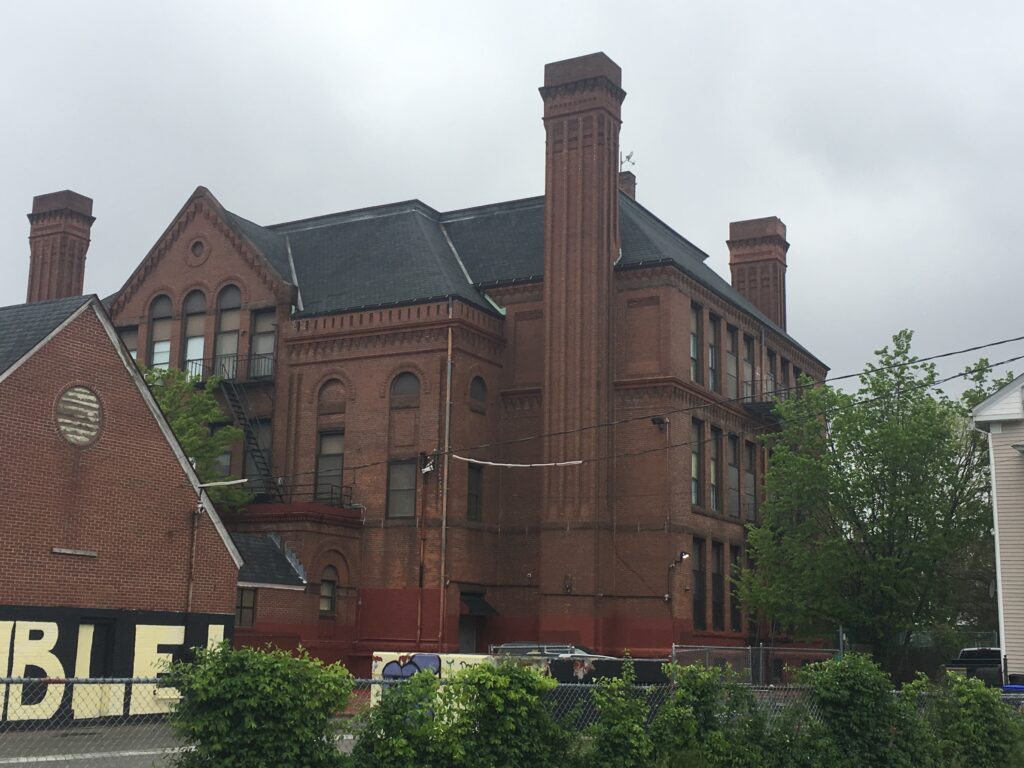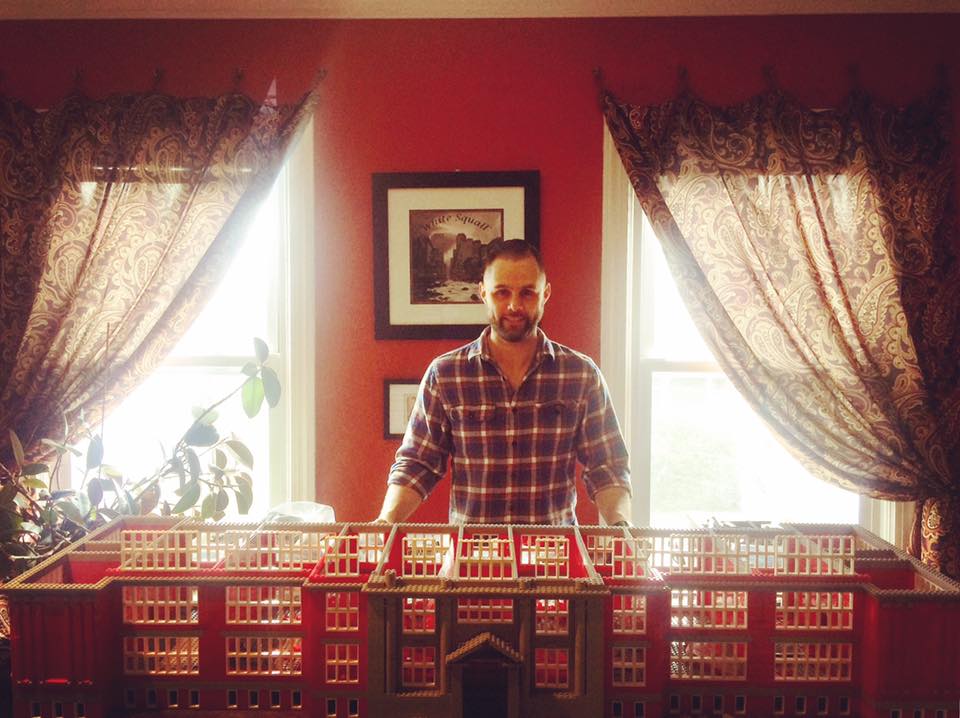Chester Barrows Elementary School served the Park View and Edgewood sections of Cranston from about the late 1920’s to 2019. Almost a century! Its namesake was a judge who died in 1931. I do not know how the school came to be named for him.
Creating the Lego version was a Christmastime 2018 project for me. I read that Cranston was going to consolidate the small elementary schools in this part of the city and that Chester Barrows was the most likely to close. This caught my interest, of course, since the whole point of my work is to get aesthetics and cultural importance to be considered when making decisions about public buildings. As I’ve said before, I understand that cities have to open and close public buildings – I also pay property taxes! – but I lament that those values are never weighed.
